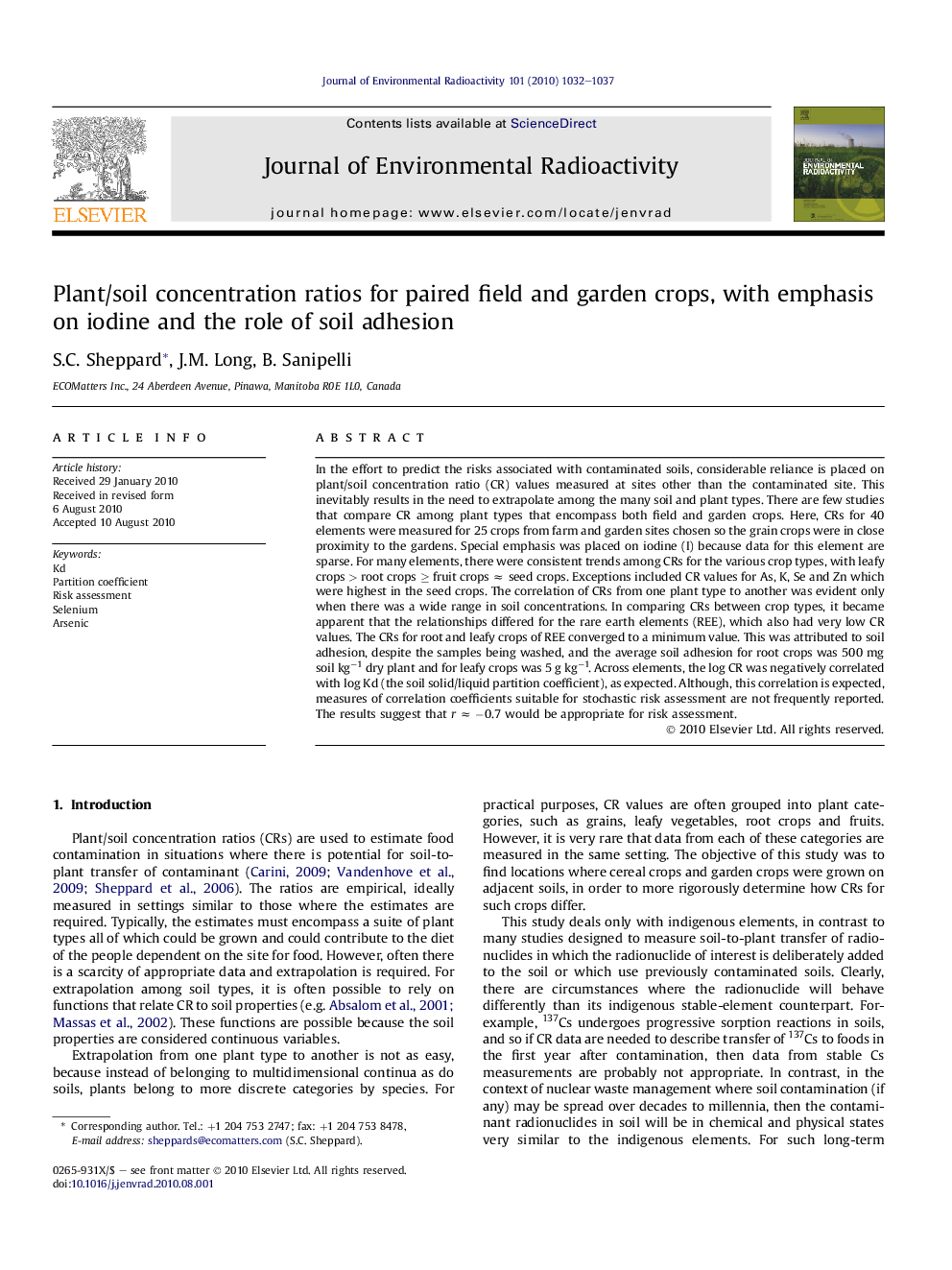| کد مقاله | کد نشریه | سال انتشار | مقاله انگلیسی | نسخه تمام متن |
|---|---|---|---|---|
| 1738503 | 1016796 | 2010 | 6 صفحه PDF | دانلود رایگان |

In the effort to predict the risks associated with contaminated soils, considerable reliance is placed on plant/soil concentration ratio (CR) values measured at sites other than the contaminated site. This inevitably results in the need to extrapolate among the many soil and plant types. There are few studies that compare CR among plant types that encompass both field and garden crops. Here, CRs for 40 elements were measured for 25 crops from farm and garden sites chosen so the grain crops were in close proximity to the gardens. Special emphasis was placed on iodine (I) because data for this element are sparse. For many elements, there were consistent trends among CRs for the various crop types, with leafy crops > root crops ≥ fruit crops ≈ seed crops. Exceptions included CR values for As, K, Se and Zn which were highest in the seed crops. The correlation of CRs from one plant type to another was evident only when there was a wide range in soil concentrations. In comparing CRs between crop types, it became apparent that the relationships differed for the rare earth elements (REE), which also had very low CR values. The CRs for root and leafy crops of REE converged to a minimum value. This was attributed to soil adhesion, despite the samples being washed, and the average soil adhesion for root crops was 500 mg soil kg−1 dry plant and for leafy crops was 5 g kg−1. Across elements, the log CR was negatively correlated with log Kd (the soil solid/liquid partition coefficient), as expected. Although, this correlation is expected, measures of correlation coefficients suitable for stochastic risk assessment are not frequently reported. The results suggest that r ≈ −0.7 would be appropriate for risk assessment.
Research highlights
► There are few studies that compare CRs among plant types that encompass both field and garden crops. Here, CRs for 40 elements were measured for 25 crops from farm and garden sites chosen so the grain crops were in close proximity to the gardens. Special emphasis was placed on I because data for this element are sparse. The results indicated:
► The correlation of CRs from one plant type to another was evident only when there was a wide range in soil concentrations.
► CRs for most elements were ordered leafy crops > root crops ≥ fruit crops ≈ seed crops.
► Exceptions included CR values for As, K, Se and Zn which were highest in the seed crops.
► Soil adhesion occurred on root and leafy crops despite the samples being washed, the average soil adhesion for roots was 500 mg soil kg‑1 dry plant and for leafy crops was 5 g kg‑1, and these imply minimum detection limits for root uptake for these plant types.
► Across elements, the log CR was negatively correlated with log Kd, and r ≈ ‑0.7 would be appropriate for probabilistic risk assessment.
► Overall, these results will support risk assessment of contaminants from many situations, although they were intended for and are especially relevant to stochastic assessment of the potential long‑term impacts of nuclear fuel waste management.
Journal: Journal of Environmental Radioactivity - Volume 101, Issue 12, December 2010, Pages 1032–1037